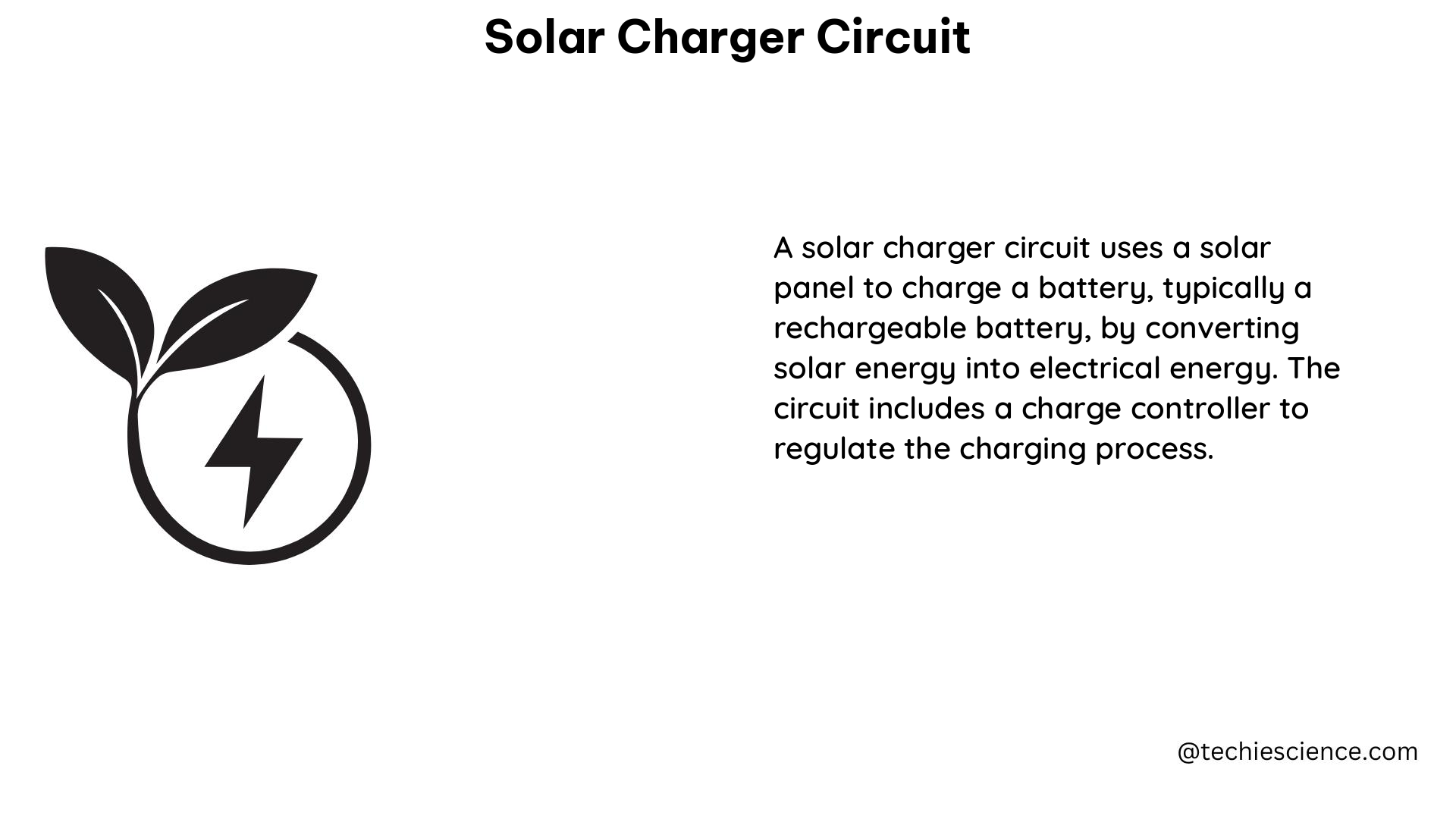The solar charger circuit is a crucial component in harnessing solar energy to charge batteries. This comprehensive guide delves into the intricate details of solar charger circuit design, validation, and optimization, providing DIY enthusiasts with a robust understanding of this essential technology.
Understanding the Solar Charger Circuit
A solar charger circuit is a specialized electronic circuit that converts the electrical energy generated by a solar panel into a form suitable for charging a battery. The circuit typically includes a Maximum Power Point Tracking (MPPT) charger, which is designed to maximize the power output from the solar panel by adjusting the load to match the panel’s maximum power point.
The solar charger circuit discussed in this guide utilizes an MPPT charger to charge a lithium-ion (Li-ion) battery. The circuit also includes a 3.3V regulator, a 5V boost converter, and a 3.3V step-down regulator to provide a stable voltage output for various components.
Technical Specifications of the Solar Charger Circuit

The technical specifications of the solar charger circuit are crucial in ensuring its efficiency and safety. Let’s dive into the key specifications:
Input Voltage Range
The input voltage range of the solar charger circuit determines its compatibility with the solar panel. The solar lipo charger circuit discussed in this guide has an input voltage range of 3V-25V, allowing it to work with a wide variety of solar panels.
Output Voltage and Current
The output voltage and current ratings of the solar charger circuit determine its compatibility with the battery being charged. The solar lipo charger circuit discussed in this guide has an output voltage of 4.2V and a maximum output current of 500mA, making it suitable for charging Li-ion batteries.
Efficiency
The efficiency of the solar charger circuit is a crucial specification that determines its performance. The efficiency is the ratio of the output power to the input power, and a higher efficiency rating means that the circuit can convert a higher percentage of the solar panel’s power into usable energy. The solar lipo charger circuit discussed in this guide has an efficiency of over 95%.
Power Consumption
The power consumption of the solar charger circuit is another critical specification that affects its efficiency. The power consumption should be as low as possible to ensure that most of the solar panel’s power is used to charge the battery. The solar lipo charger circuit discussed in this guide has a standby power consumption of less than 1mW.
Safety Features
The safety features of the solar charger circuit are essential in preventing damage to the battery and the circuit. The circuit should include protection features such as overvoltage protection, overcurrent protection, and short-circuit protection. The solar lipo charger circuit discussed in this guide includes these essential safety features.
Design and Validation of the Solar Charger Circuit
Designing and validating the solar charger circuit is a critical step in ensuring its efficiency and safety. The design process typically involves the following steps:
-
Component Selection: Carefully selecting the appropriate components, such as the MPPT charger, regulators, and other supporting components, based on the technical specifications and requirements of the solar panel and battery.
-
Circuit Simulation: Simulating the circuit using electronic design automation (EDA) tools, such as SPICE or LTspice, to verify the circuit’s functionality and performance before building the physical prototype.
-
Prototype Building: Constructing the physical prototype of the solar charger circuit using the selected components and following best practices for circuit layout and assembly.
-
Testing and Validation: Thoroughly testing the prototype to ensure that it meets the technical specifications and safety requirements, including input voltage range, output voltage and current, efficiency, power consumption, and protection features.
-
Optimization: Continuously refining the circuit design and component selection to improve the overall efficiency, power consumption, and safety of the solar charger circuit.
Practical Applications and Use Cases
The solar charger circuit discussed in this guide can be used in a variety of applications, including:
- Portable Electronics Charging: Charging smartphones, tablets, and other portable electronic devices using solar power.
- Off-Grid Power Systems: Powering remote or off-grid systems, such as camping equipment, emergency preparedness kits, and remote monitoring stations.
- Solar-Powered Lighting: Charging batteries for solar-powered outdoor lighting, such as garden lights or pathway illumination.
- Battery Backup Systems: Providing backup power for critical systems, such as security systems or emergency communication devices.
Conclusion
The solar charger circuit is a crucial component in harnessing solar energy to charge batteries. By understanding the technical specifications, design, and validation process, DIY enthusiasts can build efficient and safe solar charging systems for a wide range of applications. This comprehensive guide has provided a detailed overview of the solar charger circuit, equipping you with the knowledge and tools to embark on your own solar energy projects.
Reference:
- Solar Lipo Charger Circuit Design and Validation
- Circuit Analysis of Solar Energy: Measure Power Consumed by Various Devices
- Solar Battery Charging – Lesson Overview

The lambdageeks.com Core SME Team is a group of experienced subject matter experts from diverse scientific and technical fields including Physics, Chemistry, Technology,Electronics & Electrical Engineering, Automotive, Mechanical Engineering. Our team collaborates to create high-quality, well-researched articles on a wide range of science and technology topics for the lambdageeks.com website.
All Our Senior SME are having more than 7 Years of experience in the respective fields . They are either Working Industry Professionals or assocaited With different Universities. Refer Our Authors Page to get to know About our Core SMEs.